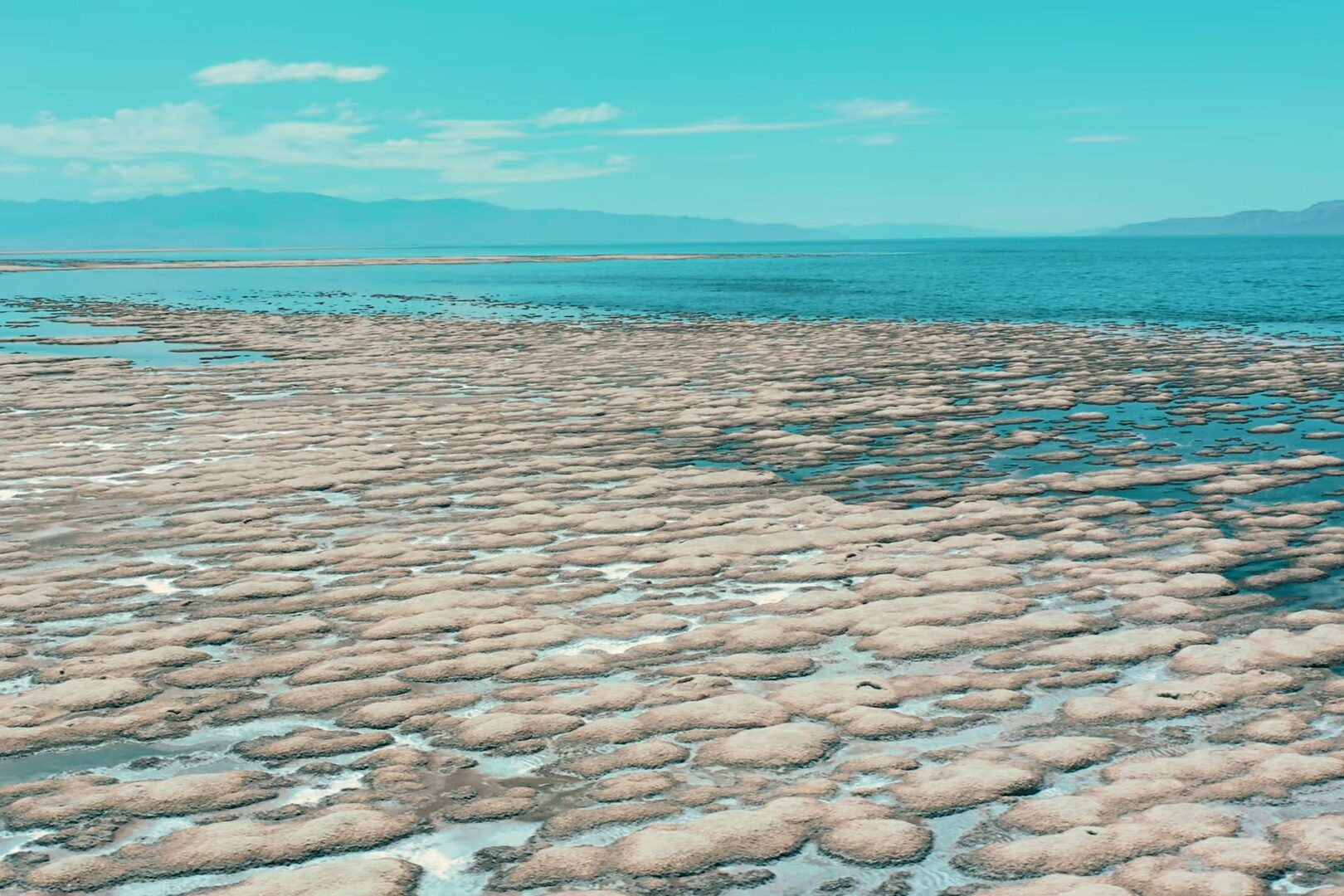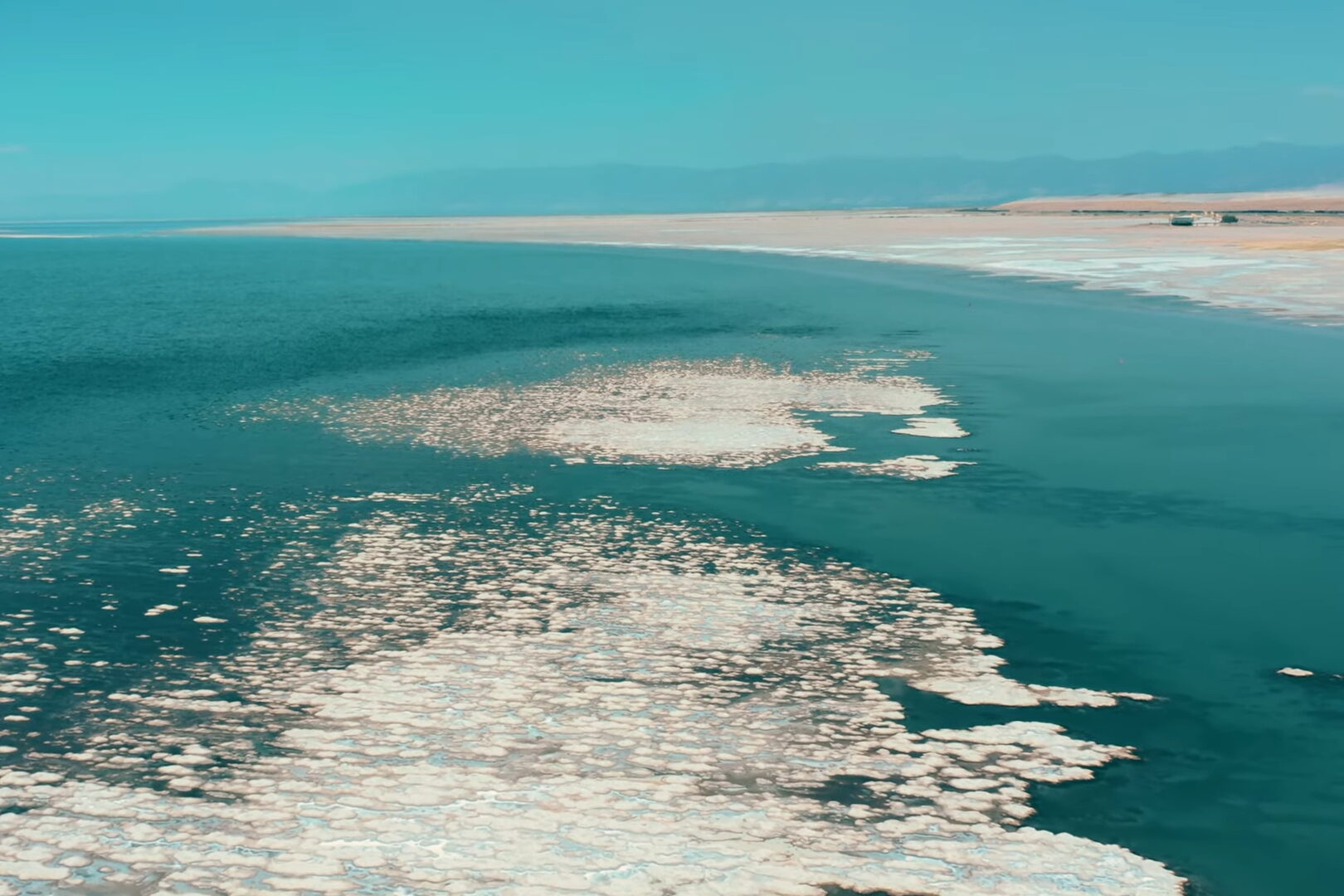The Great Salt Lake in Utah is the Western Hemisphere’s largest body of saltwater without an outlet to the sea and is an essential part of the Great Basin ecosystem in the U.S. Southwest. It is vital to sustaining the local wildlife and is also an important economic resource, generating an estimated $1.3 billion of output each year. The lake is undergoing a severe drought due to climate change, leading to record-low water levels in recent years.
Human decisions, such as the construction of a railroad causeway, are also contributing to the lake’s drying up. This is causing salinity levels to rise and is resulting in the death of the lake’s microbialites, which are the foundation of the Great Salt Lake ecosystem and support millions of birds and other wildlife. If left unchecked, this megadrought could have long-lasting impacts on the environment, economy, and livelihoods of those in the region. To help cope with this, local governments must be proactive in creating policies that will protect the Great Salt Lake and ensure its viability for future generations.
What are the causes of the shrinkage of the Great Salt Lake?
Excessive water consumption
Excessive water consumption in the Great Salt Lake region has caused the lake to shrink. Decades of overconsumption have put the region’s water supply under strain, and the effects of climate change have exacerbated the problem. As a result, the lake has received less than one-third of its normal stream flow, and its surface has dropped to a record low. The lack of fresh water has made the lake so salty that it has become toxic to the native brine shrimp, flies, and the 10 million birds that rely on the lake during migration. The decrease in water supply also threatens a billion-dollar industry extracting minerals from the brine and exposes more than 800 square miles of sediments tainted with hazardous substances that can be picked up by the wind and blown into people’s lungs.
Climate change
The effects of climate change have contributed to the shrinkage of the Great Salt Lake. With rising temperatures and prolonged droughts, the lake is losing water faster than it is being replenished, leading to a decline in water levels. Additionally, humans are taking more water from the rivers that feed into the lake than is returned to the lake, resulting in even more water lost to evaporation. This, combined with the overconsumption of water from nearby communities, agricultural uses, and inefficient appliances, means that the lake could disappear within the next five years unless drastic measures are taken.
Urban development
The effect of urban development on the shrinkage of the Great Salt Lake is that increased demands for water force utilities, farmers, and other water users to grapple with a shrinking water supply. This is due to the extravagant water use over the years as the region became more populated. This has resulted in more water needing to be drawn from far upstream, creating a deficit in the water supply and a shortfall in the lake’s resources.

What is the current water level of Salt lake?
According to data from the U.S. Geological Survey, the current water level of the Great Salt Lake is 1277 m above sea level, which is the lowest level since records began in the mid-1800s. This drop in water level has caused the lake to lose nearly half of its surface area from the historical average, exposing around 2000 sq km of the lakebed.

How Important is the Great Salt Lake?
The Great Salt Lake in Utah is an incredibly important ecosystem, providing habitats, supporting major industries, and suppressing toxic dust in the lakebed. It is also home to millions of migratory birds and is a major source of revenue for the brine shrimp fishing industry. Unfortunately, scientists are warning that the lake could disappear within five years due to excessive water usage. Without a coordinated effort to pump water back into the lake, Utah could experience widespread air and water pollution, agriculture and quality of life declines, and potentially threatening species.
What conservation measures have been taken to halt the Great Salt Lake disappearance?
The Utah State Legislature set aside $40 million for conservation efforts to halt the Great Salt Lake’s disappearance. The U.S. Congress passed two bills that provided $25 million to study and monitor the lake. Last year, the Utah legislature also passed numerous conservation bills, including a $40 million trust fund to help the ailing lake.
House Majority Leader Mike Schultz (R) introduced a bill in February of 2021 that would appoint a Great Salt Lake commissioner to coordinate state efforts, create a strategic plan to save the lake, and set aside $40 million for conservation initiatives. Utahns must also cut their water consumption by 30% to 50% to reverse the decline. Additionally, Gov. Spencer Cox (R) recently proposed another massive infusion of water management and conservation funding.
FAQs
What are the risks of the Great Salt Lake disappearing?
The risks of the Great Salt Lake disappearing are numerous and potentially catastrophic. The lake has already shrunk by two-thirds and could disappear in just five years without policy changes. Such a disaster could expose millions of people to toxic dust from the lakebed and arsenic, which can cause respiratory conditions, heart and lung disease, and cancer. The lake is also home to 10 million migratory birds and wildlife, which would be unable to survive without it.
The lake’s disappearance would also be a significant economic blow to Utah’s tourism and agricultural industries. The lake’s low water levels have already made the extraction of magnesium, lithium, and other minerals infeasible, and further reductions could make it impossible. Additionally, dust from the lakebed could damage crops, degrade soil, and cause snow to melt faster. All of this could have long-term economic repercussions for the state.
How has the ecosystem of the Great Salt Lake been affected by drought?
The Great Salt Lake in Utah has been drastically affected by drought, resulting in a 73% decrease in its water levels. This has led to the lake’s surface elevation falling below the minimum healthy level of 4,200 feet for the last 20 years. Due to the decrease in water levels, the lake’s salinity has increased to 19%, which is six times more than the ocean. This has devastated the lake’s food chains, as the 12% salinity favored by the lake’s brine shrimp and cyanobacteria are no longer suitable for them.
As a result, 10 million migratory birds that depend on the lake’s resources have been put at risk. In addition, 5 million eared grebes that return to the lake each year require 30,000 brine shrimp a day but are at risk of not finding enough food due to the lake’s dwindling resources. Furthermore, Wilson’s phalaropes, who depend on the lake’s midge larvae and brine flies to take on fat reserves for their migration to South America, could face famine if the lake’s food-chain resources were to collapse completely.
What is the current salinity level of the Great Salt Lake?
The current salinity level of the Great Salt Lake is 19%. This is over six times as salty as the ocean and is well above the 12% salinity threshold required by two important food chains in the lake. This is a record salinity level for the lake, which has not seen a minimum healthy surface elevation of about 4,200 feet for 20 years. The lake is expected to further decrease in water levels until autumn or early winter when incoming water equals or exceeds the evaporative losses.
How has the Great Salt Lake’s disappearance impacted the mineral industry?
The shrinking of the Great Salt Lake is profoundly impacting the mineral industry. As the lake shrinks, it exposes vast amounts of a dry lake bed, making mineral extraction difficult and costly. The receding water has also caused the marina to become unusable for most boating, further reducing the ability to harvest minerals. In addition, with the water level becoming too low for boats to access the docks, boaters have to haul their boats out of the lake. This hinders mineral extraction since it is not possible to access the lake as easily. As a result of the lake’s disappearance, the mineral industry has seen a significant drop in profits, with some estimates putting the losses at around $1.3 billion.

